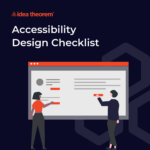Development & Engineering
13 Dark UX Patterns To Avoid If You Don’t Want To Spook Your Users
01 Nov. 2019
5 mins read


What are dark patterns?
In UX, dark patterns are deceptive UX/UI methods that are designed to trick or mislead users into doing something they don’t want to do. An example would be hiding extra fees from the user by making them visually unnoticeable. These UX patterns try to exploit human psychology in an attempt to boost company profits or goals.
It is important to note that dark patterns are not a right, ethical practice.
Why do some companies use them?
There are still companies out there that choose to use these dark patterns in their products. The reason why is because of money. Dark patterns are used for short-term results rather than qualitative information like user-friendliness. Dark patterns work, in a sense. They can successfully trick some people, so companies choose to keep on using them.
Why should they be avoided?
Good user experience design is about giving users enjoyable and seamless interactions with the products. It is centered around the user and it is not deceptive or sneaky. Dark patterns spoil trust and take advantage of the users. This is quite the opposite of what UX/UI designers should be doing.
Dark patterns are also damaging to the company in the long term. Users know and don’t like to be tricked or feel like they have to watch out for themselves. This will cause anger, frustration, and corrode a company’s relationship with its users. Users will not feel like they can trust you, which will damage the product in the end.
Instead of using dark patterns, it is better to use good UX patterns in the beginning.
The dark pattern checklist
Idea Theorem™ created a checklist of 13 dark patterns as a guide on what not to include in a product.
Confirmshaming: Are you using language that tries to shame the user for wanting to opt out of something?
Tricky questions: Are you asking the users confusing questions, trying to make them do what you want them to?
Forced continuity: When a user’s free trial has expired, are they getting charged without warning?
Disguised ads: Are there ads that disguise themselves as part of the product?
Hiding costs: Are you hiding extra costs such as delivery fees until the very last stage of the checkout process?
Sneaking into a purchase: Are you trying to sneak an additional item into the user’s bag?
Trapping: Are you making it very hard for the user to opt out of something?
Misdirection: Are you trying to lead users into doing things that they don’t want, such as highlighting a more expensive option over the others?
Baiting and switching: Are you using an established UX pattern and then changing its function to something completely different, giving the user an unexpected, undesirable result?
Hidden options: Are you hiding things like subscription checkboxes from the user or unsubscription links?
Privacy: Are you trying to trick users into publically sharing more about themselves than they intended to?
Bewildering Language: Are you purposefully using language that is unclear or complicated to prevent users from canceling or opting out of something?
Using Fear: Are you using language that tries to scare the user about what will happen if they choose to opt out of something?
—
What’s Next
Idea Theorem is an award-winning design & development agency based in North America. Through our empathy-driven approach, we have crafted digital products that have positively impacted over 10 million users. Our mission is to shape the digital future by delivering exceptional experiences. Contact Us if you have any questions; we will gladly help you.





